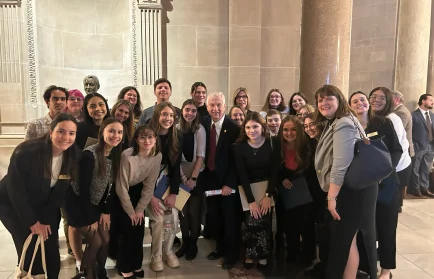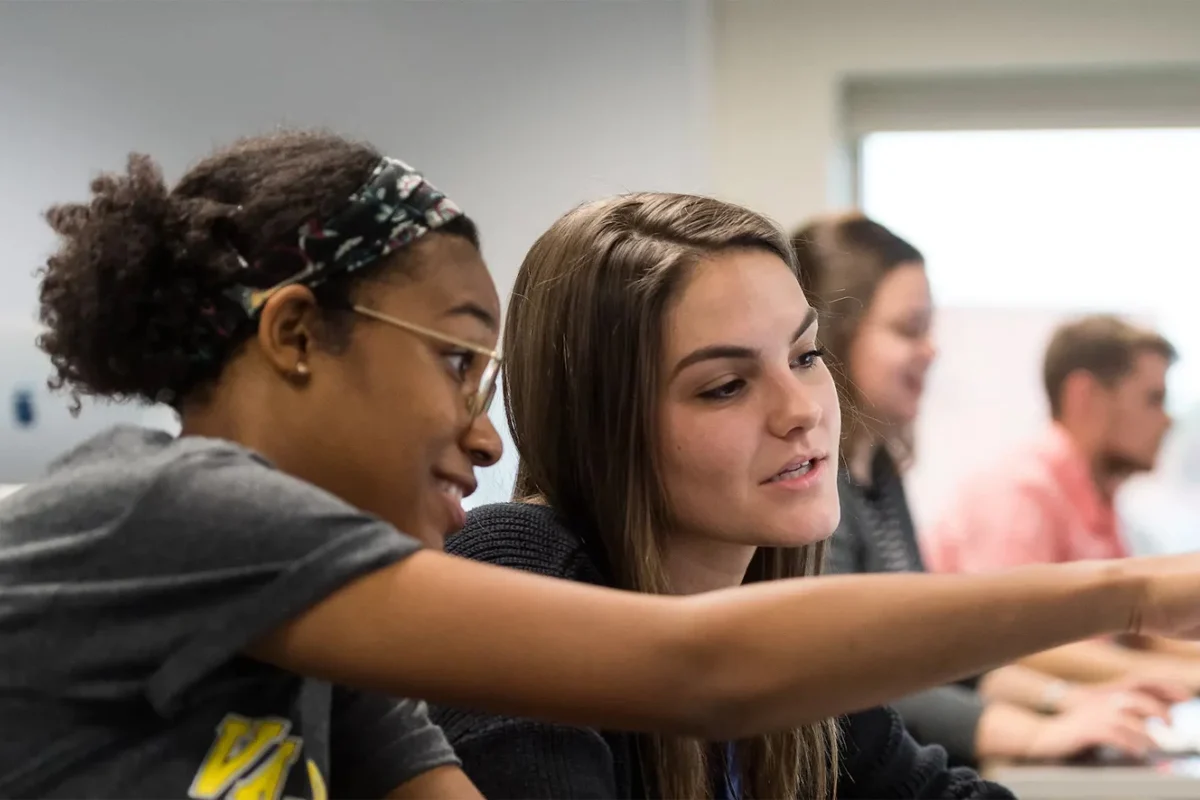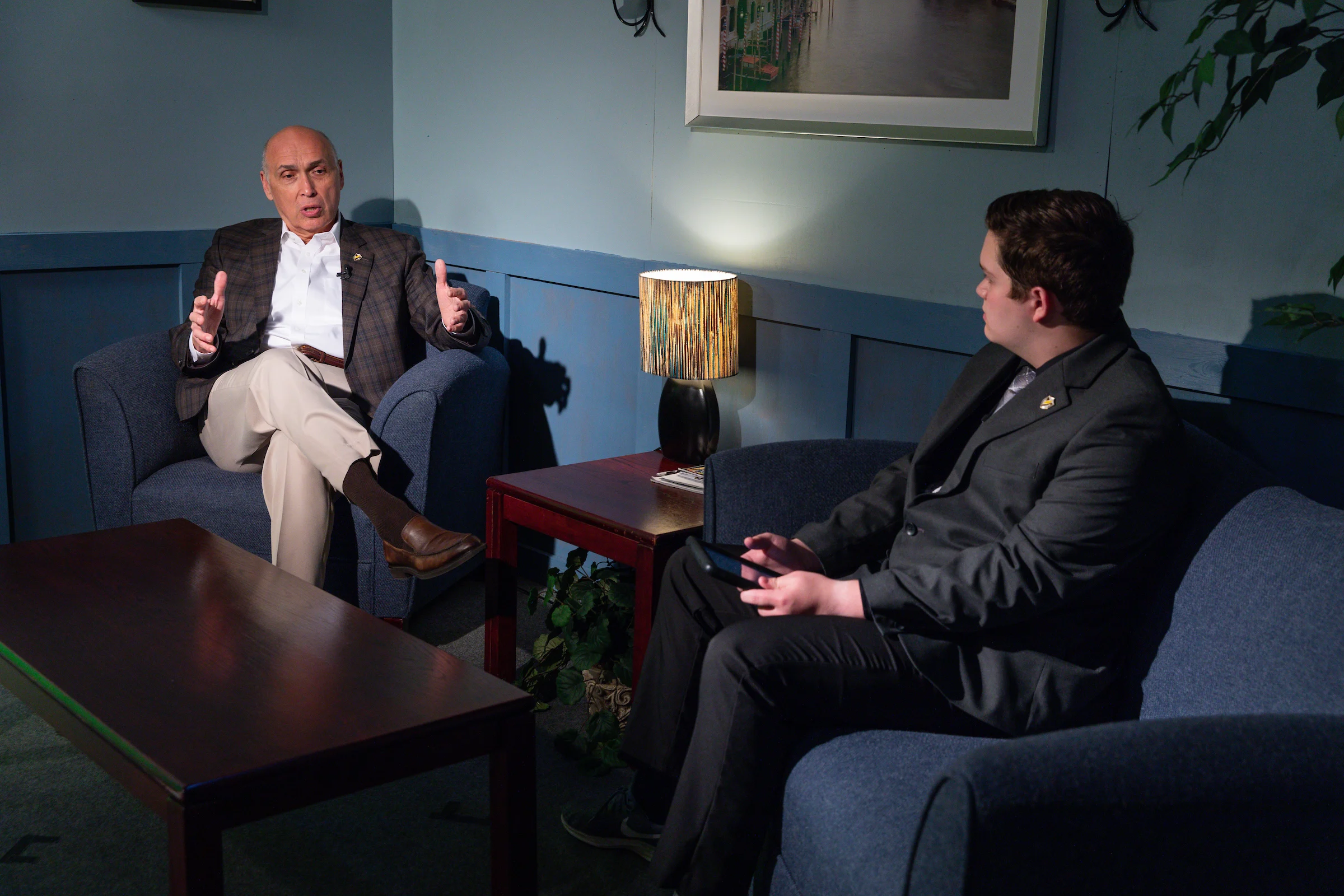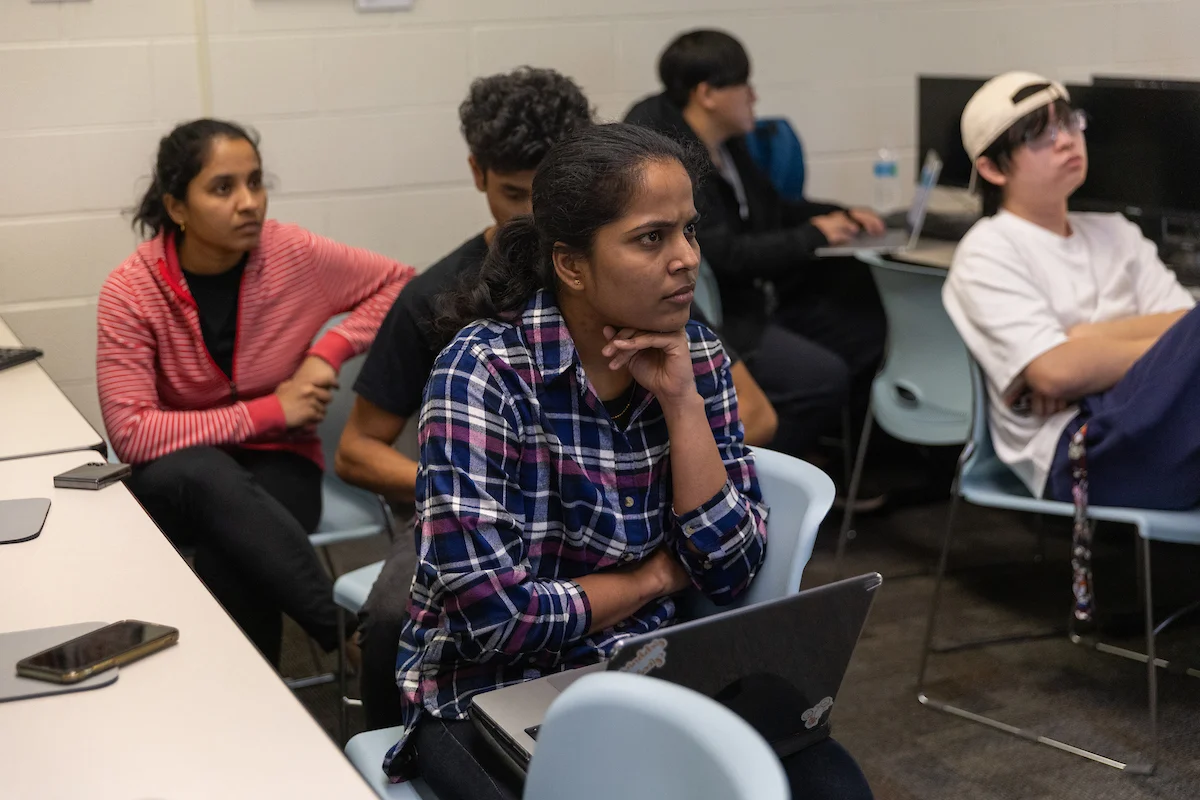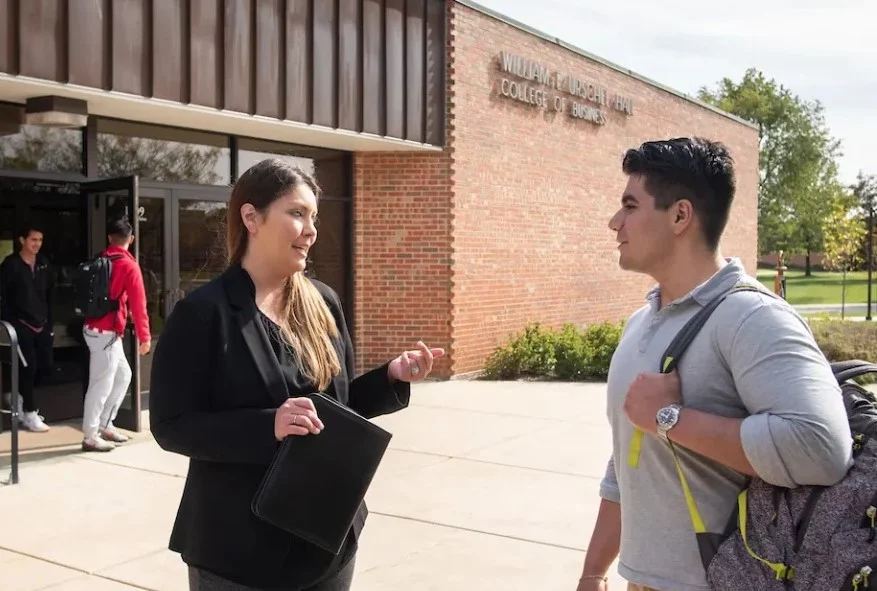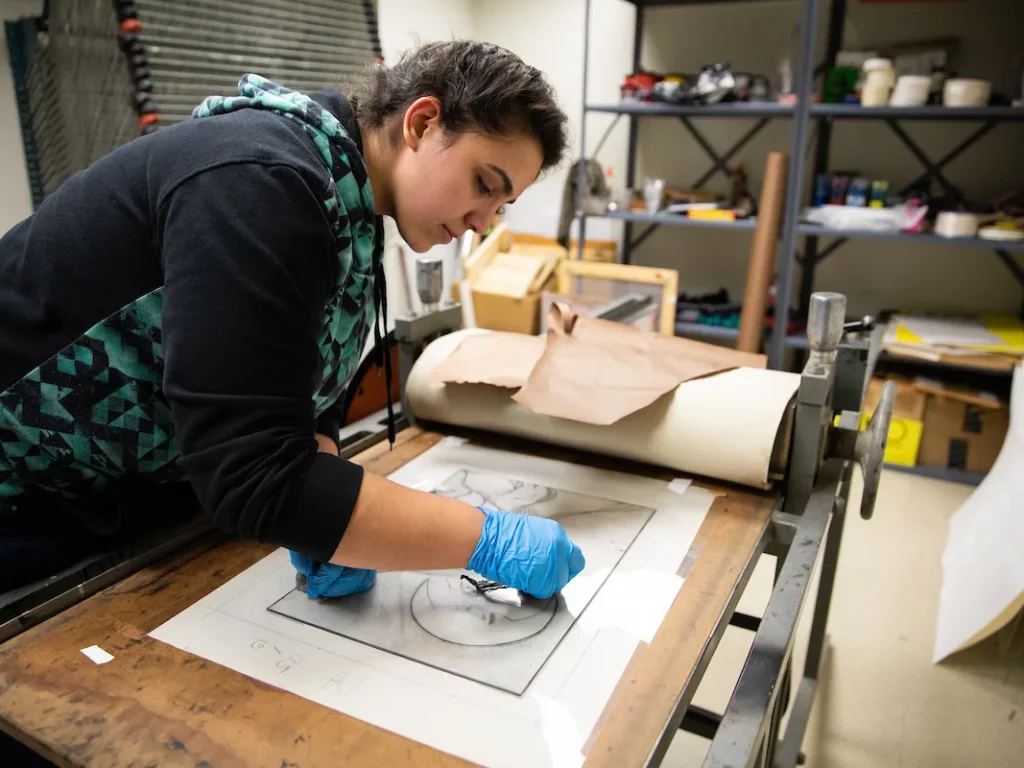Communication
A communication major can take you down a variety of career paths from public relations and journalism to social media management and public speaking.
About Our Communication Degrees
Communication majors strive to master verbal, written, and visual communication skills valued in multiple careers including public relations, journalism, marketing, advertising, sales, and business. Students develop the tools necessary to create messages for diverse audiences and critically analyze media messages.
General Information
| Bachelor of Arts – Communication Major (Minimum 33 Cr.) | |
|---|---|
| CVA 100 | Introduction to Media and Visual Arts |
| CVA 145 | Interpersonal and Small Group Communication |
| CVA 243 | Public Speaking |
| CVA 265 | Public Relations Principles |
| CVA 302 | Intellectual Property and Communication Law |
| CVA 386 | Internship |
| CVA 499 | Capstone Senior Project |
One of the following concentrations:
| Take one course from the following options: | |
|---|---|
| CVA 345 | Leadership Communication |
| CVA 366 | Negotiation and Conflict Resolution |
| CVA 315 | Intercultural Communication |
| Take one course from the following options: | |
|---|---|
| CVA 244 | Persuasion and Advocacy |
| CVA 361 | Advanced Journalism and Conflict Resolution |
| CVA 472 | Screenwriting |
| Six additional CVA credits: | ||
|---|---|---|
| Any CVA courses | ||
| ENGL 311 | New Literacies, Technology, and Cultures, Of Writing | 3 Cr. |
| ENGL 342 | Grammar, Style, and Editing | 3 Cr. |
| ENGL 431 | Advanced Writing and Rhetoric | 3 Cr. |
| CVA 160 | Media Storytelling |
| CVA 230 | Graphic Design |
| CVA 261 | Foundations of Journalism |
| CVA 361 | Advanced Journalism (satisfies WID) |
| CVA 261 | Foundations of Journalism |
| Take one course from the following options: | |
|---|---|
| CVA 345 | Leadership Communication |
| CVA 366 | Negotiation and Conflict Resolution |
| CVA 315 | Intercultural Communication |
| Take one course from the following options (satisfies WID | |
|---|---|
| CVA 244 | Persuasion and Advocacy |
| CVA 361 | Advanced Journalism |
| CVA 472 | Screenwriting |
| 3 additional CVA credits from the following options | |
|---|---|
| CVA 290 | Topics in Communication and Visual Arts |
| CVA 362 | Communication Cases and Campaigns |
| CVA 364 | Public Relations Writing |
| CVA 365 | Corporate Advocacy and Activist Communication |
| CVA 390 | Topics in Communication and Visual Arts |
| CVA 401 | Social Media |
| CVA 90 | Topics in Communication and Visual Arts |
Minor Information
A communication minor provides students with a wide variety of skill sets valuable in practically any profession, including public speaking, written communication, visual communication, and rhetorical responsibility.
From the Communication Major, take 3 credits from the 100-level, 6 credits from the 200-level, and 6 credits from 300-level or higher.
Suggested Courses:
- 145: Interpersonal and Small Group Comm
- 215: Career and Professional Development
- 243: Public Speaking
- 244: Persuasion and Advocacy
- 251: Studio Television Production
- 261: Foundations of Journalism
- 265: Public Relations Principles
- 290: Topics in Communication and Visual Arts
- 302: Intellectual Property and Comm Law
- 311: Organizational Communication
- 315: Intercultural Communication
- 345: Leadership Comm
- 361: Advanced Journalism
- 362: Communication Cases and Campaigns
- 364: Public Relations Writing
- 365: Corporate Advocacy and Activist Comm
- 366: Negotiation and Conflict Resolution
- 390: Topics in Communication and Visual Arts
- 401: Social Media
- 465: Race, Class & Gender in Media
- 490: Topics in Communication and Visual Arts
Communication and Visual Arts
Program Rankings & Highlights
Communication and visual arts
Meet Our Faculty
CVA’s faculty create a supportive and challenging environment for students — identifying the strengths of their work, while also encouraging constant improvement. This environment helps students take creative risks as they develop their unique perspectives.
communication and visual arts




